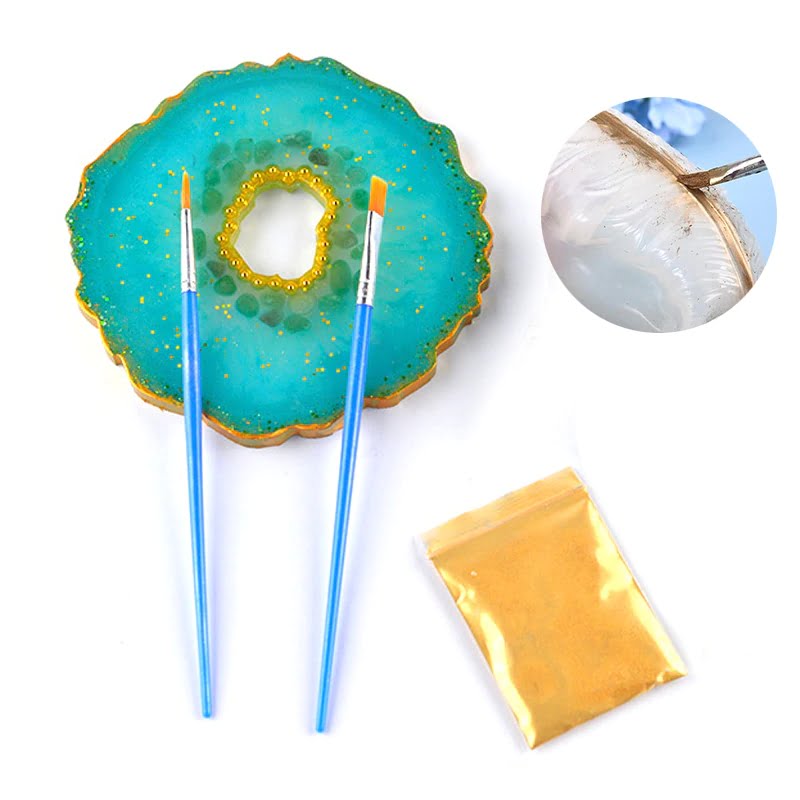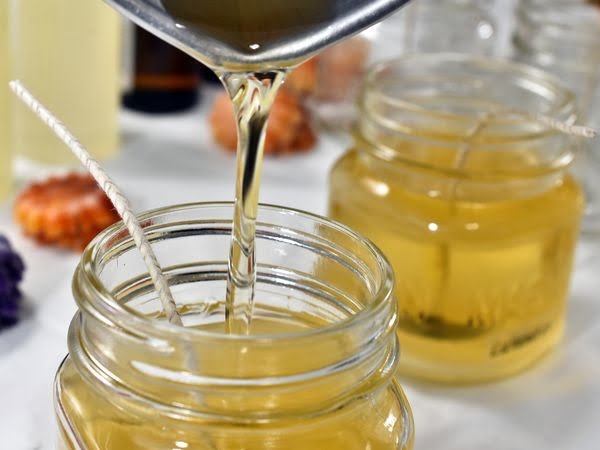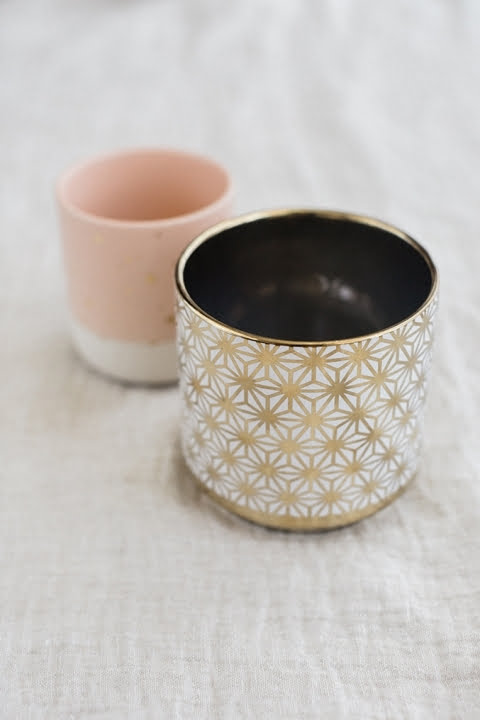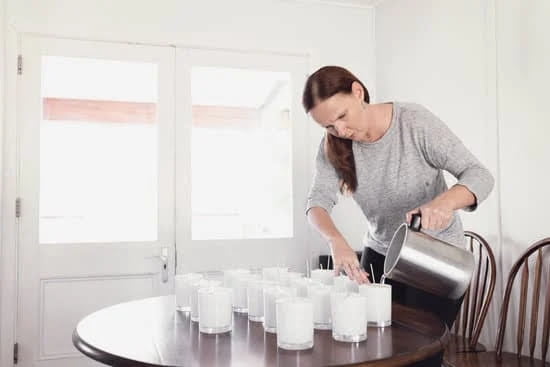Addressing the common question of whether salt can be added to wax when making candles, this article aims to provide insights into the role of salt in candle making. Many crafters are curious about the potential benefits and drawbacks of incorporating salt into their candle-making process.
Understanding the purpose of adding salt to wax and how it affects the texture and appearance of candles is crucial for creating high-quality, customized candles. In this blog post, we will explore the various aspects of using salt in candle making, including suitable types of salt, incorporating salt into the wax, its effects on candle performance, creative techniques for using salt in candle designs, and alternative ingredients for enhancing candles.
When it comes to understanding the role of salt in candle making, there are various potential benefits and considerations to take into account. From affecting the consistency and appearance of candles to potentially impacting their burning and fragrance release, adding salt to wax can have a significant influence on the overall quality and appeal of homemade candles.
As we delve deeper into this topic, we will also highlight some creative techniques for incorporating salt into candle designs and provide recommendations for combining different additives for custom candle creations.
In addition to exploring the effects of salt on candle performance, we will also discuss alternative ingredients that can be used to enhance the appearance and functionality of candles. By comparing the effects of salt with other common additives used in candle making, readers will gain a comprehensive understanding of how various ingredients contribute to creating unique and visually appealing homemade candles.
Let’s dive into this fascinating topic further to learn how experimenting with different additives like salt can lead to one-of-a-kind candle designs.
Understanding the Role of Salt in Candle Making
Salt has been used in candle making for various reasons, and understanding its role can help you create unique and high-quality candles. One of the main benefits of adding salt to wax is that it can help improve the overall texture and appearance of the finished product. Salt can also contribute to a longer, cleaner burn by reducing soot and smoke production.
Potential Benefits of Adding Salt
When salt is added to candle wax, it not only enhances the texture but also creates a visually appealing mottled or crystalline effect in the finished candles. This unique aesthetic quality can make your candles stand out and appeal to customers who appreciate handcrafted items. Additionally, salt can help to harden the wax, preventing it from becoming too soft or melting too quickly when lit.
Potential Drawbacks or Challenges
While salt offers several benefits in candle making, it’s important to be aware of potential drawbacks as well. Using too much salt in the wax mixture can lead to an uneven burn and affect the fragrance throw of the candle. It’s essential to find a balance when incorporating salt into your candle-making process to avoid these challenges while still reaping its benefits.
Types of Salt Suitable for Candle Making
When it comes to incorporating salt into candle making, it’s important to consider the types of salt that are suitable for this craft. Different salts can have varying effects on the texture, appearance, and performance of candles, so choosing the right type is crucial. Here is a breakdown of the types of salt that are most suitable for candle making:
Types of Salt:
- Table Salt: This fine-grained salt is one of the most commonly found in households and can be used in candle making. It dissolves easily in wax and can help create a smooth and even texture in the finished candles.
- Sea Salt: Sea salt comes in various textures and coarseness, which can add visual interest and create unique patterns within the candles. It may also contribute to a more natural, rustic look.
- Epsom Salt: Epsom salt, also known as magnesium sulfate, can add a crystalline or frosty effect to candle wax. It is often used to create a snowy or icy appearance in candles.
Each type of salt offers its own benefits when it comes to candle making. Table salt is great for achieving an even texture, sea salt adds visual appeal, and Epsom salt contributes a unique frosted effect.
It’s essential to source high-quality salt for candle making to ensure the best results. Look for pure, unprocessed varieties without any added chemicals or anti-caking agents. Specialty shops or online retailers that cater to crafting and DIY projects can be good sources for high-quality salt suitable for candle making.
By understanding the different types of salt and their effects on candles, crafters can make informed decisions when selecting the right type of salt for their desired candle designs.
Incorporating Salt Into the Wax
Adding salt to wax when making candles is a common technique that can enhance the texture and appearance of the final product. Understanding how to properly incorporate salt into the wax is essential for achieving the desired results in candle making. In this section, we will discuss step-by-step instructions for adding salt to wax, tips for achieving the desired consistency and texture, as well as common mistakes to avoid when working with salt in candle making.
Step-by-Step Instructions
When incorporating salt into candle wax, it is important to start with a small amount and gradually increase as needed. Begin by melting the wax according to your chosen candle-making method. Once the wax has melted, carefully add a small amount of salt and stir gently until it is completely dissolved. It’s important not to add too much salt at once, as this can affect the consistency of the wax.
Achieving Desired Consistency and Texture
The amount of salt added to the wax will determine the final texture and appearance of the candle. A higher concentration of salt will result in a more textured, crystallized appearance, while a lower concentration will provide a smoother finish. Experimenting with different ratios of salt-to-wax can help achieve the desired aesthetic for your candles.
Common Mistakes to Avoid
One common mistake when adding salt to wax is using an excessive amount, which can lead to issues such as poor burning performance or rough texture. Additionally, failing to fully dissolve the salt in the melted wax can create uneven distribution throughout the candle. It’s important to carefully follow instructions and experiment with small batches before creating larger quantities of salt-infused candles.
By following these steps and tips for incorporating salt into candle wax, you can achieve unique textures and visual effects that set your handmade candles apart from store-bought alternatives.
Effects of Salt on Candle Performance
Adding salt to candle wax can have a significant impact on the performance of the candle. One potential benefit is that salt can help to enhance the fragrance release of the candle. When the candle burns, the addition of salt can help to distribute the scent more evenly and effectively throughout the room.
This is particularly useful for candles that are intended to serve as air fresheners or provide a pleasant aroma in a living space. Additionally, salt can also improve the overall burn quality and longevity of the candle.
It’s important to note that using salt in candle making can affect the burning characteristics of the candle. The presence of salt can cause the wax to melt at a slightly higher temperature, which may result in a longer burn time for the candle.
However, it’s essential to carefully monitor and test candles containing salt to ensure that they burn safely and effectively. There have been reports of excessive amounts of salt leading to erratic burning behavior, so it’s crucial to find an appropriate balance when incorporating salt into candle wax.
When it comes to safety concerns, using controlled amounts of salt in candles does not pose significant risks. However, excessive use of salt could potentially lead to increased soot production or other issues during burning. Therefore, it’s always advisable for candle makers to conduct small-scale tests before producing larger batches with added salt.
| Impact | Information |
|---|---|
| Enhanced Fragrance Release | The addition of salt helps distribute scent more evenly. |
| Burn Quality and Longevity | Salt may cause longer burn time but needs monitoring. |
| Safety Concerns | Excessive use could lead to increased soot production. |
Creative Techniques for Using Salt in Candle Making
When it comes to candle making, there are numerous creative techniques that can be used to enhance the appearance and overall aesthetic of the final product. Adding salt to candle wax is one such innovative approach that many crafters have found success with. There are several inventive ways in which salt can be incorporated into candle designs, allowing for unique textures and visual appeal.
To start off, here are a few creative techniques for using salt in candle making:
1. Salt Crystals: Adding coarse salt crystals directly to the surface of a candle can create a striking visual effect. These crystals can be applied to the outside of a finished candle by gently pressing them into the warm wax before it completely hardens.
2. Layered Texture: By incorporating different sizes or types of salt into the wax at specific points during the pouring process, crafters can achieve layered textures within the candle itself. This technique adds depth and dimension to the appearance of the candle.
3. Colored Salt Infusions: Mixing colored salts (such as Himalayan pink salt) into melted wax can create unique color patterns within the candles. This technique provides an opportunity to experiment with different hues and gradients for visually captivating results.
Experimenting with these creative techniques can yield impressive visual results, but it’s important to note that achieving desired effects may require some trial and error when it comes to determining the ideal salt-to-wax ratios and application methods. Nonetheless, with patience and practice, crafters can produce stunning salt-infused candles that stand out from traditional designs.
Alternative Ingredients for Enhancing Candles
When it comes to enhancing candles, salt is just one of many potential additives that can be used to customize the appearance, texture, and performance of homemade candles. In addition to salt, there are several other ingredients that can be incorporated into candle-making to achieve unique and desirable effects. From dried flowers and herbs to essential oils and colorants, the possibilities for enhancing candles are endless.
One popular option for enhancing candles is the use of dried botanicals such as lavender, rose petals, or eucalyptus leaves. These natural elements not only add visual interest to the candle but can also impart a subtle fragrance when the candle is burned. Additionally, essential oils like lavender, citrus, or vanilla can be added to the wax to infuse the candle with a delightful scent that complements its aesthetic appeal.
Colorants are another useful ingredient for customizing candles. Whether in liquid or powder form, colorants allow crafters to create candles in a wide range of hues and shades. By combining different colors or layering them within the candle wax, unique and eye-catching designs can be achieved.
It’s important to note that when experimenting with alternative ingredients for enhancing candles, proper research and caution should be exercised. Not all materials are safe for use in candle making and some may present fire hazards if used incorrectly. Therefore, it’s crucial to follow reliable guides and resources when incorporating new elements into your candle creations.
| Ingredients | Effects |
|---|---|
| Dried Botanicals (e.g. lavender, rose petals) | Add visual interest; impart subtle fragrance |
| Essential Oils (e.g. lavender, citrus) | Infuse candle with pleasant aroma |
| Colorants (liquid or powder form) | Create a variety of hues and designs |
Conclusion
In conclusion, the question “Can I put salt in wax when making candles?” has been thoroughly explored in this blog post, and the answer is a resounding yes.
Adding salt to wax when making candles can enhance the texture, appearance, and even the performance of the finished product. By understanding the role of salt in candle making, selecting the right type of salt, incorporating it into the wax properly, and being mindful of its effects on candle performance, both amateur and experienced candle makers can experiment with this versatile ingredient.
Throughout this article, we have delved into various aspects of using salt in candle making, from how it affects the texture and appearance of candles to its potential impact on burning and fragrance release. Additionally, creative techniques for incorporating salt into candle designs have been explored, offering inspiration for those who seek to create visually appealing and unique candles.
However, it’s worth noting that while salt can enhance candles in many ways, there are also alternative ingredients that can be used to achieve similar effects.
Ultimately, by providing practical guidance and suggestions for using salt and other additives in candle making, this blog post encourages readers to unleash their creativity and experiment with different combinations to produce their own one-of-a-kind candle creations. The possibilities are endless when it comes to enhancing candles with inventive ingredients like salt. So go ahead-start exploring your options and let your creativity shine through in your next batch of homemade candles.

Welcome to my candle making blog! In this blog, I will be sharing my tips and tricks for making candles. I will also be sharing some of my favorite recipes.





